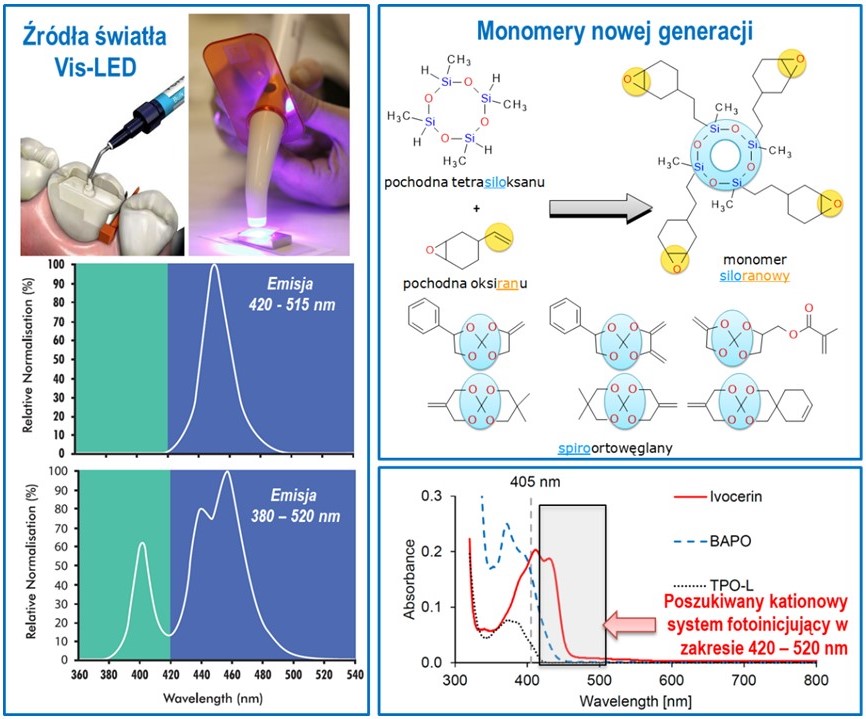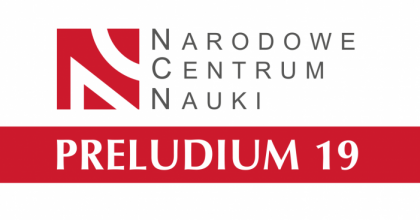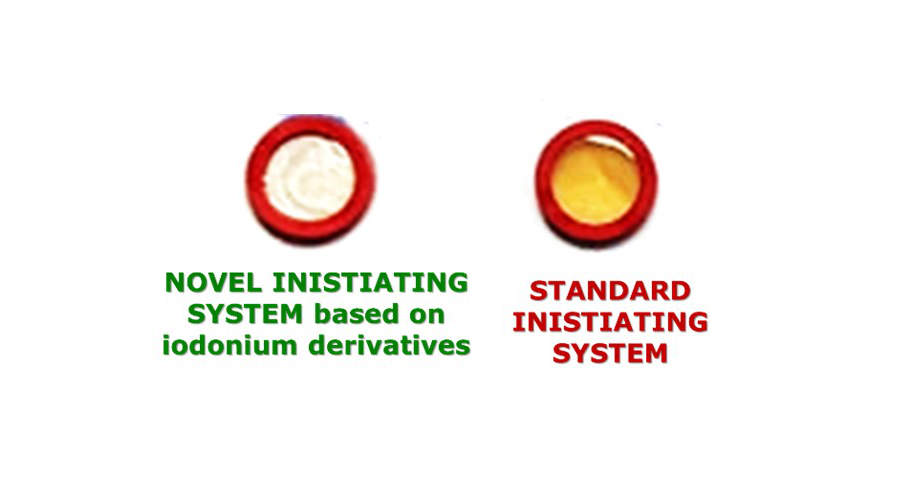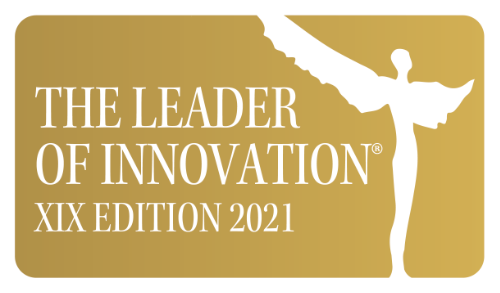Projects
TEAM TECH
Project title:
Molecular design, synthesis and application of photoinitiator-catalysts (PICs) for photopolymerization reactions
Principal investigator: Joanna Ortyl, Prof., PhD., DSC., Eng.
Obtained funds: 3 868 900 PLN
Project duration: Start day: 01.03.2018 – End day: 28.05.2022
Short description of the project: (nr POIR.04.04.00-00-204B/16-00; TEAM TECH/2016-2/15)
Due to the continuous search for highly efficient photoinitiating systems in the production of polymer coatings and high-speed 3D imaging technologies, a research plan has been proposed on application issues extended with cognitive aspects concerning the development of new high-performance photoinitiator-catalyst systems (PICs) showing versatility through the possibility of photochemical initiation of all types of standard photopolymerization processes (such as cationic photopolymerization (CP), free-radical polymerization (FRP), thiol-ene photopolymerization and hybrid photopolymerization). Moreover, the developed PICs can be applied to modern light-initiated polymerization processes such as controlled radical photopolymerization, which has been widely studied in recent years. The use of materials obtained by these processes leads to the development of new applications that guarantee a well-defined and, what is more, controlled stage of formation of the final polymeric product.

XIX EDITION OF THE CONTEST ”LEADER OF INNOVATION® 2021
Category: Woman Inventor for Joanna Ortyl, Prof., PhD., DSc., Eng.
Awarded for scientific and research activities that resulted in numerous publications, patents, utility models, invention projects and practical applications and industrial implementations, especially in the field of photochemistry – including photopolymerization processes in polymer systems and photochemical processes taking place in organic molecules. The award is a direct result of the TEAM TECH project co-financed by the Foundation for Polish Science
Diamentowy Grant
Project title:
Design, preparation and testing of the application properties of a new type of PSP and TSP coatings as part of the construction of innovative systems for mapping the distribution of thermodynamic state parameters on the surfaces of real objects, for the needs of the high technology industry.
Principal investigator: MSc. Eng. Maciej Pilch
Obtained funds: 220 000 PLN
Project duration: Start day: 09.10.2019 – End day: 08.10.2023
Short description of the project:
The main goal of this project is to obtain a new type of Pressure Sensitive Paints (PSP) and Temperature Sensitive Paints (TSP) with high sensitivity and a wide range of applicability, as well as to check the possibility of using them for selected tasks carried out in the high technology industry. As part of the project, the developed PSP and TSP systems will be tested in wind tunnels as systems for mapping pressure and temperature distribution on the surfaces of aerodynamic models.
LIDER
Project title:
Multi-material 3D printer dedicated to production of solid metal and galvanic alloys parts, as well as metal-polymer hybrid elements using developed coupled technology of metal electrodeposition and photopolymerization of polymer resins.
Principal investigator: MSc. Eng. Maciej Pilch
Obtained funds: 1 470 000 PLN
Project duration: Start day: 01.01.2022 – End day: 01.01.2025
Short description of the project:
The main objective of the Project is to develop device for multi-material 3D printing of solid metal and galvanic alloys details , as well as metal-polymer hybrid elements using developed coupled technology of metal electrodeposition and photopolymerization of polymer resins. The basic assumption of the project is to develop budget 3D printing device that allows you to print:
- Three-dimensional solid metal details (solid metal structure is created directly in the 3D printing process, without the need for annealing in a furnace as part of post-production processing);
- Three-dimensional galvanic metal alloys details (some of the galvanic metal alloys show the features of metallic glasses, which allows to postulate that three-dimensional details made of them will be characterized by very good mechanical properties significantly exceeding solid metal details);
- Three-dimensional hybrid metal-polymer parts. The hybrid elements produced by this technique consist of metal and polymer parts joined together during the 3D printing process and are characterized by increased strength-to-weight ratio up to 40% compared to solid metal details.
- The target group in this project are manufacturers of 3D printers, companies from the chemical industry and training centers.
TRL 4.0 – Innovation Incubator
Project title:
Luminescent-labeled Solvent Quenching Pressure Sensitive Paints (SQ-PSP) dedicated to tests in wind tunnels.
Principal investigator: MSc. Eng. Maciej Pilch
Obtained funds: 66 430 PLN
Project duration: Start day: 23.04.2021 – End day: 22.04.2022
Short description of the project:
The aim of the project is product innovation:
- Solvent Quenching Pressure Sensitive Paints (SQ-PSP) with a new SQ type luminescent sensor (the product includes the composition of the coating and the method of applying these coatings to aerodynamic models).
- Implementation of the pressure mapping technology, developed in the Applied Photochemistry Laboratory at the Cracow University of Technology, with the use of NEW Solvent Quenching Pressure Sensitive Paints (SQ-PSP) for aerodynamic tests carried out by the Wind Engineering Laboratory (Faculty of Civil Engineering) at the Cracow University of Technology on request of external companies, operating in the field of air pressure mapping.
Diamentowy Grant
Project title:
Synthesis and testing of application properties of new high-performance photoinitiating systems dedicated to new generation dental photocuring composites
Principal investigator: MSc. Eng. Monika Topa-Skwarczyńska
Obtained funds: 220 000 PLN
Project duration: Start day: 2018-09-19 – End day: 2022-09-18
Short description of the project:
The main goal of this project is the synthesis of high-performance photoinitiating systems dedicated to photo-curable polymer dental composites for dental fillings. Due to the long search for very effective photoinitiating systems for a new generation of dental composite materials based on epoxy resins, oxiranes, oxetanes and siloranes, the project proposed a research plan regarding application issues for this type of materials. In addition, the scope of research work has been extended to include cognitive aspects related to the development of completely new initiating systems (single-component or multi-component) showing the versatility of action through the possibility of photochemical initiation:
- cationic photopolymerization with ring opening for new generation dental materials, e.g. FiltekTM Siloran by 3M;
- free-radical photopolymerization as standard used in photocurable dental materials;
- hybrid photopolymerization involving cationic ring-opening photopolymerization and radical chain photopolymerization.
For this purpose, first, the synthesis of completely new systems was planned for the role of initiating systems based on onium salt systems, including iodonium and sulfonium salts with a co-initiator or photosensitizer in the form of chromophores with absorption characteristics adapted to the currently used Vis-LED dental light sources (from 400 nm to 550 nm). The photoinitiators obtained in this way with appropriate absorption characteristics are also tested in terms of their effectiveness and initiation efficiency of cationic and radical photopolymerization of monomers used as a matrix in dental composites.
Project effects:
As part of the project, new initiation systems dedicated to the preparation of next-generation dental composites have already been developed, which have a number of significant advantages compared to the standard camphorquinone / aromatic amine initiator system.
Preludium 17 – National Science Centre
Project title:
Development and evaluation of physicochemical and mechanical properties of photocurable polymer composites with reduction polymerization shrinkage under visible light
Principal investigator: MSc. Eng. Monika Topa-Skwarczyńska
Obtained funds: 209 000 PLN
Project duration: Start day: 2020-02-28 – End day: 2023-02-27
Short description of the project:
The aim of the project is to obtain new class of photocurable polymer composites generated in situ in the process of addition-fragmentation-chain transfer free-radical photopolymerization and ring opening cationic photopolymerization under visible light, determination of their physico-chemical and mechanical properties, as well as the explanation of reaction chemistry of their formation. Radical photopolymerization with addition–fragmentation-chain transfer gives the possibility to gain control over the photopolymerization process, and as a consequence to obtain materials of a regular structure, greater degree of conversion, good mechanical properties and of reduced polymerization shrinkage. What is more, free-radical photopolymerization ACFT process, in connection with a simultaneous cationic photopolymerization with ring-opening, which also guarantees obtaining polymer materials of reduced polymerization shrinkage, gives the possibility to obtain a new group of materials which may replace the materials containing standard matrices based on methacrylic systems of BisGMA/TEGDMA type. The combination of unique characteristics of polymer matrices obtained by cationic photopolymerization with ring opening and addition-fragmentation-chain transfer free-radical photopolymerization with specific characteristics of the fillers of polyhedraloligomericsilsesquioxanes type containing photopolymerisable terminal double bonds (with possible modification with standard fillers) should result in obtaining new-generation composite materials of improved properties.
Obtaining new type of photocurable polymer composites requires both basic, and advanced knowledge concerning kinetics and the reaction mechanism of their formation, as well as mechanical properties extended with the aspects connected with the research deciding on the possibility of their use for biomedical applications. All these issues will be raised in the project and examined in the function of polymer structure, filler type and photo initiators type and structure. Photocurable polymer composites of optimized composition will be examined as materials dedicated for applications in conservative dentistry.
The proposed project has been developed in response to the demand for innovative photocurable composite materials obtained by Vis-LED type light source of a visible range use, characterized by reduced polymerization shrinkage and improved mechanical properties.
In addition, it is expected that new, photocurable polymer composites will demonstrate improved mechanical properties, and above all, significantly reduced polymerization shrinkage, as these properties are necessary for photocurable filling materials used in dentistry.
The research proposed within the project is innovative and its implementation will significantly enrich available knowledge, both in the field of polymer photochemistry, as well as in terms of knowledge on composite materials.
TRL 4.0 – Inkubator Przedsiębiorczości
Project title:
Photo-initiation systems for the preparation of a new generation of safe photocurable dental composites
Principal investigator: MSc. Eng. Monika Topa-Skwarczyńska
Obtained funds: 58 240 PLN
Project duration: Start day: 2021-06-01 – End day: 2022-09-30
Short description of the project:
The solution concerns the development of completely new initiating systems for the production of new generation photo-cured dental composites, as well as the production of completely new dental composites with better performance properties compared to commercial dental fillings.
The solution was created as a response to the specific needs of the industry for new, completely safe, new generation dental composites. There are many dental fillings available on the market, from metals and alloys (mainly amalgams), ceramics, to polymeric materials (including glass ionomer cements, compomers and resin composites). Nevertheless, all of them have some limitations. Resin composites are currently the most popular and desired in the modern dental industry. However, the dental industry is still looking for composites that would meet 4 main assumptions:
• complete absence of toxicity,
• great aesthetics,
• elimination of harmful UV radiation,
• low polymerization shrinkage.
An important aspect is also that the dental filling has a mechanical strength comparable to that of dentin and / or enamel, which nowadays is the greatest challenge for producers of light-cured dental fillings.
Diamentowy Grant
Project title:
Design and synthesis of novel luminescent sensors and their photochemical investigation of potential suitability for selective and multifunctional application in molecular diagnostics
Principal investigator: mgr inż. Patryk Szymaszek
Obtained funds: 220 000 PLN
Project duration: Start day: 2020-10-14 – End day: 2024-10-13
Project cooperation:
- Jagiellonian University, Department of Chemistry, Physicochemistry of Interfacial Phenomena Group
- Jagiellonian University, Faculty of Pharmacy, Department of Pharmaceutical Biochemistry
- Institute of Psychiatry and Neurology in Warsaw
Short disctoption of the project:
The aim of the project is to design and synthesize a series of novel low-molecular-weight organic fluorescent sensors with diverse structures that will enable their application in molecular diagnostics and bioimaging, allowing for analysis of molecular and intracellular phenomena occurring in eukaryotic cell structures using fluorescence microscopy. An additional aim of the project is to obtain organic-inorganic luminescent complexes containing in their structure organic ligands based on the leading structures of the best prepared low molecular weight organic fluorescent dyes. Obtaining such a set of metal-organic molecular sensors ensures the development of a set of structurally diverse research tools that can be used in diagnostics and molecular imaging. The new systems will be characterized by high photo-stability, large Stokes shift, high luminescence quantum yield (especially in the red and infrared regions), water solubility, and high selectivity and sensitivity, as well as good matching of absorption characteristics to minimize cell auto-absorption.
The obtained novel molecular luminescent sensors will be investigated for their photophysical properties including spectrophotometric and spectrofluorimetric studies in order to gain an in-depth understanding of the relationship between the structure of the obtained compounds and the obtained spectroscopic properties. Functionality studies will include spectroscopic analyses of interactions in fluorescent sensor ↔ protein (albumin) systems, determination of FRET parameters and the influence of interferents such as metal ions or pH variables. The selected sensors will be first subjected to mechanistic studies to determine how they penetrate cell membranes using Langmuir and Langmiur-Blodgett techniques, and then tested for their potential to visualize cell structures using intravital fluorescence microscopy, preceded by cytotoxicity studies.
Extensive research on the synthesis and optical properties of new luminescent sensors will provide the necessary guidelines for the design of a new generation of fluorescent dyes and luminescent sensors for applications in molecular biology, which will allow for their future use in bioimaging to analyze molecular and intracellular phenomena occurring in eukaryotic cell structures, as well as in medical diagnostics.
Preludium 19 – National Science Centre
Project title:
Synthesis and spectroscopic studies of new water-soluble visible free-radical photoinitiators dedicated to obtaining microfabricated hydrogel structures as an extracellular matrix for 3D bioprinting
Principal investigator: MSc. Eng. Wiktoria Tomal
Obtained funds: 209 040 PLN
Project duration: Start day: 2021-01-18 – End day: 2024-01-17
Short description of the project:
The main purpose of this project is to synthesize high-performance, water-soluble single-component free radical photoinitiators showing absorption characteristics in the visible range, enabling them to be tailored to produce three-dimensional micro-fabricated hydrogel structures as an extracellular matrix for 3D bioprinting.
Due to the constant search for effective initiating systems which will be characterized by the highest possible solubility in water, as well as a good energetic compatibility with modern, pro-environmental light sources, such as Vis-LEDs, a research plan has been proposed to develop, study and test new free-radical photoinitiators. The most important research issues to be addressed in the proposed project include:
- The issue of adjusting the light absorption characteristics of radical photoinitiators to the emission characteristics of the light sources in the visible range, which is extremely important in the development of biomedical applications, where the biological material can only be exposed to visible light, due to their special sensitivity to damaging UV radiation. So far used photoinitiators of radical polymerization show very poor compatibility with visible light sources, which causes that most of the light energy is wasted instead of being consumed for the photopolymerization process.
- The issue of solubility of radical photoinitiators in a polar aqueous environment. So far, several compounds have been used as water-soluble free-radical photoinitiators, with their solubility being relatively low and unsatisfactory.
- The issue of the lack of biological safety of free-radical photoinitiators. Currently, an important factor limiting the use of chemical compounds as radical initiators for biomedical applications is not only their poor water solubility, but above all their toxicity. Moreover, for many commercially available initiators, information on their toxicity is limited due to the lack of data on the basic safety assessment of in vitro models. In practice, the problem of photoinitiators’ toxicity causes not only the lack of application possibilities in in vitro models, but also inhibits the development of new materials. Additionally, biological data on the mechanism of initiators and their photolysis products penetration into cells and their influence on basic physiological cell processes are limited. Therefore, the project also includes research on safety assessment of newly developed radical photoinitiators.
- The issue of increasing the quantum efficiency of generating radicals at the photoinitiation stage and the development of highly effective initiating structures with relatively long life times in the excited state. So far, a number of basic studies on the influence of structural factors on the quantum yield of photolysis of single-component radical photoinitiators have been conducted. These studies, however, have not led to the development of highly efficient radical photoinitiators in the visible range. Therefore, many aspects need to be studied in detail, as these are important issues for the effectiveness of designing new photoinitiators. Moreover, it is planned to investigate the possibilities of increasing the quantum efficiency of photoinitiators with the help of amine initiators built into the structure, by developing and analysing the mechanism of operation of such designed systems.
Primary research aimed at the experimental clarification of the above issues will not only contribute to a better understanding of the mechanisms of initiation of free-radical photoinitiators, but will also provide guidelines for the design of new, water-soluble, effective, visible initiators for free-radical polymerization. Thus, the development of new, Polish radical photoinitiators for free-radical photopolymerization of materials for biomedical applications and the knowledge of the properties of these compounds, their influence on the polymerization kinetics as well as the mechanism of action should significantly accelerate technological progress in this field.
The proposed project was designed to fill a research gap for water-soluble radical initiators that would effectively initiate visible light photopolymerization processes and, in addition, would not exhibit toxicity. The new photoinitiators would be effectively used to obtain microfabricated hydrogel structures as an extracellular matrix for 3D bioprinting.
TRL 4.0 – Innovation Incubator
Project title:
Photocurable polymer resins for the fabrication of polymer nanocomposites using 3D-VAT printing technology (Acronym: Nano-Resin-3D-VAT)
Principal investigator: MSc. Eng. Wiktoria Tomal
Obtained funds: 75 276 PLN
Project duration: Start day: 2021-06-01 – End day: 2022-09-31
Short description of the project:
The aim of the project is product innovation namely:
– Development of photo-curable (photosensitive) resins for printing of polymer nanocomposites by 3D-VAT (SLA and/or DLP) technique;
and indirectly process innovation:
– 3D printing conditions will be developed, i.e. the process of obtaining nanocomposites using the developed formulations of photo-curable resins in additive technologies using commercially available 3D-VAT printers (of various producers).












